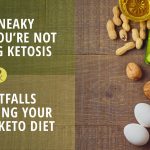Glycemic Index: Only a small piece of your food selection puzzle
You thought you had finally figured it out: Avoid all of the foods that are high on the glycemic index (GI), like bananas and potatoes and watermelon, and your blood sugar and insulin levels will be on point for life!
Sorry to burst your bubble: It’s not that simple.
First, a quick Glycemic Index (GI) 101:
GI is a measurement that comes from comparing the rise in blood sugar for a particular food relative to glucose.
Simply put, foods high on the index raise your blood sugar levels, while foods lower on the index don’t raise your blood sugar levels and take longer to digest. The idea then is to stick to foods with a low GI.
Foods considered low on the index have a measurement of 55 or less, where as moderate GI foods fall between 56 and 69.
High is considered 70 or above. Read more here: (https://www.gisymbol.com/about-glycemic-index/).
Glycemic load is another term you may have come across. Maybe you thought it was the same thing as GI. It’s not.
The Glycemic Load is calculated by multiplying the GI of a particular food with the number of grams of carbohydrates you consumed of this food.
So again, the theory is, if you’re trying to avoid sugar and insulin spikes and crashes, the more you eat in grams of carbohydrates and the higher the glycemic index, the worse off you will essentially be in terms of sugar spikes.
But again, it’s still not that simple. Here are a couple things to consider before blindly avoiding high GI foods and devouring low GI foods.
- How you prepare food, as well as whether or not you cook a particular food, can change its GI. Carrots, for example, have a much higher GI when they’re cooked than when they’re raw.
- GI is based on a 50 g serving size. This has led to foods like watermelon being kind of wrongfully labelled as a high GI food. In reality, watermelon is mostly water and is low in carbohydrates, so even though its GI is high with a score of 72, it’s glycemic load is low with a score of 7.2. The same is true of carrots. Carrots have a GI of 71, but a glycemic load of only 6!
Thirdly, there’s another incredibly important piece of the puzzle to consider: The insulin index.
Before we get into that, here’s a quick insulin 101, in case that biology class you took all those years ago has faded into nothingness:
Insulin is a peptide hormone stored in and released by your pancreas. Its most important role is to regulate blood sugar levels in the body.
It does this by removing glucose from the blood and sending it to other parts of the body.
Thus, with too little insulin in your system, you end up with too much glucose in your blood. Similarly, too much insulin means your blood sugar levels drop too low, which also isn’t good.
Best case scenario is your body does a good job regulating insulin levels on its own, but this isn’t the case for many people.
More and more people have become insulin resistant, meaning their bodies no longer regulate insulin properly.
Eventually, this can turn into Type 2 diabetes. It goes without saying, like blood sugar spikes and crashes, you also want to avoid huge highs and lows in insulin levels.
Circling back to the insulin index now: The insulin index of a particular food refers to how much it elevates insulin levels in the blood in the two hours after you eat.
So kind of like GI, only it refers to insulin as opposed to blood sugar levels.
When it comes to insulin, some foods are, well, kind of weird.
Some foods, namely protein and milk products, cause an insulin response in your body despite there being no carbohydrates present. Meanwhile, other foods cause a disproportionate insulin response relative to their carbohydrate load.
Yogurt, for example, has a glycemic score of 62 and an insulin score of 115!
Finally, something else to consider: The satiety index. In other words, how well the food satisfies your hunger and makes you feel full.
It’s just common sense that if you can control your hunger you’ll do a better job controlling your body weight…
In sum, we’re not saying GI isn’t an important consideration when selecting what foods to fuel your body with.
There are just other equally important things to consider, as well, including glycemic load, how you prepare the food, how much you eat of it, as well as its insulin and satiety index.
Good luck and don’t hesitate to reach out to us with your questions.







